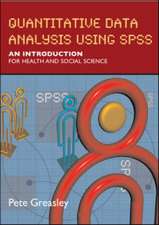Life and Motion of Socio-Economic Units: GISDATA Volume 8
Editat de Andrew Frank, Jonathan Raper, J. P. Cheylanen Limba Engleză Paperback – 30 iun 2020
The amount of data collected by governments, business and research organisations has increased markedly in recent years. Geographic Information Systems have been more widely used than ever before for the storage and analysis of this information. Most GIS can handle this information spatially rather than temporally, and have difficulty with the management of socio-economic time series, which relate to spatial units. Accordingly, this book covers the issues ranging from the formal model to differentiate aspects of spatio-temporal data, through philosophical and fundamental reconsideration of time and space to the development of practical solutions to the problem. This book draws together an interdisciplinary group of scientists in the field of geography, computing, surveying and philosophy. It presents the definitive sourcebook on temporal GIS as applied to socio-economic units.
| Toate formatele și edițiile | Preț | Express |
|---|---|---|
| Paperback (1) | 442.34 lei 6-8 săpt. | |
| CRC Press – 30 iun 2020 | 442.34 lei 6-8 săpt. | |
| Hardback (1) | 1450.60 lei 6-8 săpt. | |
| CRC Press – 14 dec 2000 | 1450.60 lei 6-8 săpt. |
Preț: 442.34 lei
Nou
Puncte Express: 664
Preț estimativ în valută:
84.64€ • 88.61$ • 70.04£
84.64€ • 88.61$ • 70.04£
Carte tipărită la comandă
Livrare economică 05-19 aprilie
Preluare comenzi: 021 569.72.76
Specificații
ISBN-13: 9780367578893
ISBN-10: 0367578891
Pagini: 348
Dimensiuni: 174 x 246 x 19 mm
Greutate: 0.6 kg
Ediția:1
Editura: CRC Press
Colecția CRC Press
ISBN-10: 0367578891
Pagini: 348
Dimensiuni: 174 x 246 x 19 mm
Greutate: 0.6 kg
Ediția:1
Editura: CRC Press
Colecția CRC Press
Public țintă
ProfessionalCuprins
1. Introduction by the Editors 2. Setting the Stage 3. Ontological Background 4. Databases for Temporal GIS: Applications 5. Definition of Socio-economic Units
Notă biografică
Frank\, Andrew; Raper\, Jonathan; Cheylan\, J. P.
Descriere
The amount of data collected by governments, business and research organisations has increased markedly in recent years. Geographic Information Systems have been more widely used than ever before for the storage and analysis of this information. Most GIS handle this data spatially rather than temporally, and have difficulty with the management of s

















